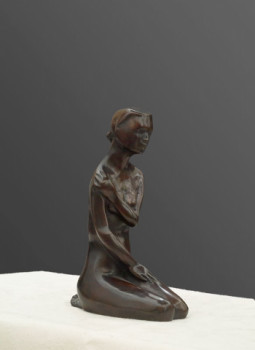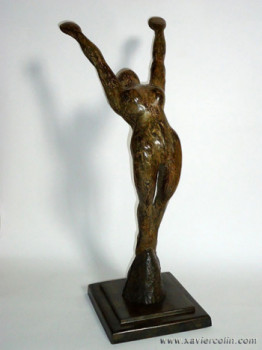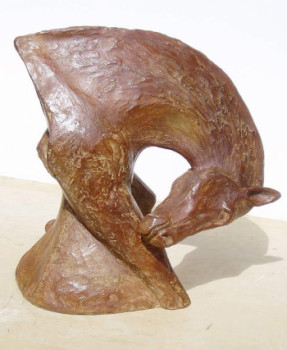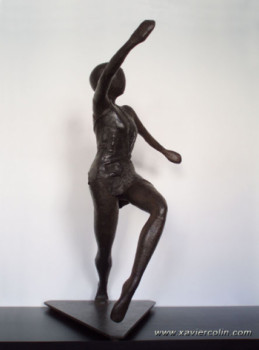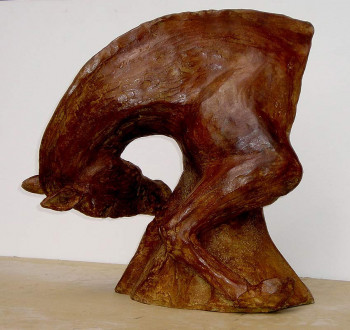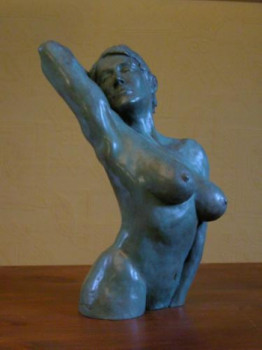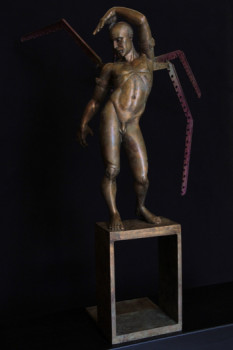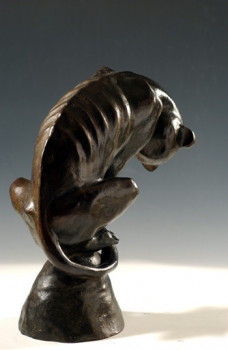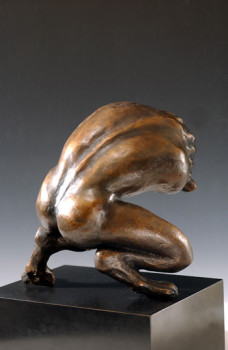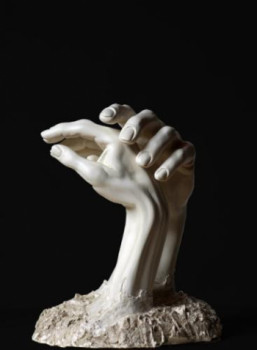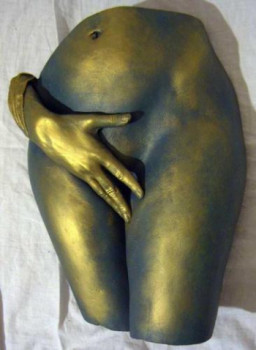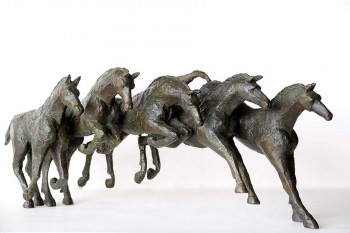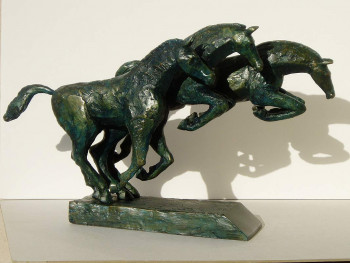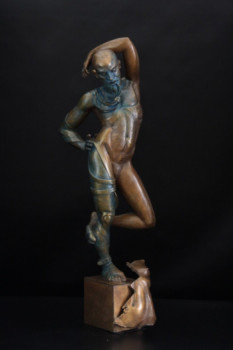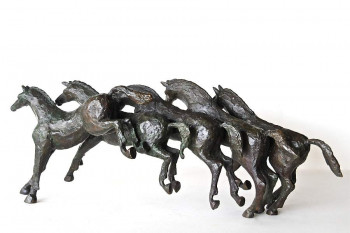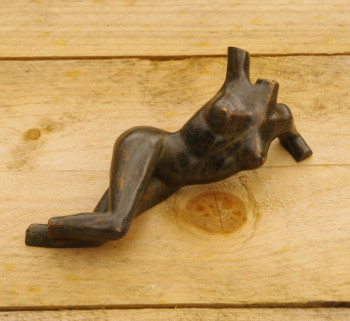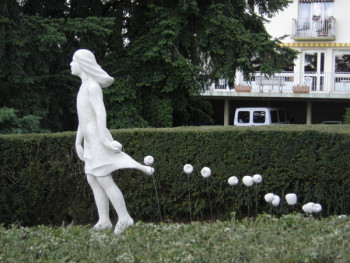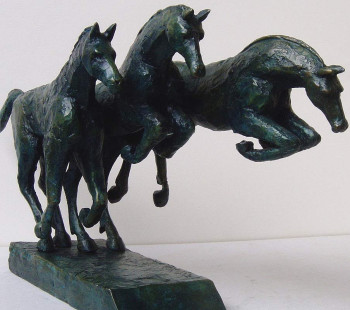
Jean Alexandre Joseph Falguière, sculptor artist heir to the Italian Renaissance: between realism and grace
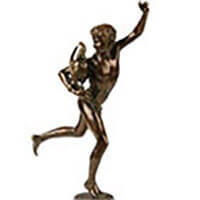
Jean Alexandre Joseph Falguière, more commonly known as Alexandre Falguiè ;re, was born in Toulouse on September 7, 1831. He died in Paris on April 19, 1900. Alexandre Falguière was a sculptor , and painter, linked to the movement of Realism and influenced by the Quattrocento of the Italian Renaissance . His works are indeed very unique. s naturalist and realist pieces, created from live models. During his life, Alexandre Falguière sculpted busts, such as that of Auguste Rodin, his friend. He also directed sculptures of everyday scenes like the work entitled the door of the school, he represented nudes, famous people like Honoré by Balzac and Louis Pasteur, as well as figures from mythology (Isis) and allegories (Les arts) .
Birth, childhood and training
Alexandre Falguière was born inToulouse at his parents' home. His father, named Joseph is a craftsman. Alexandre is admitted to the Toulouse School of Fine Arts in the class of the sculptor Bernard Griffoul-Dorval. Alexandre demonstrated a lot of talent at a very young age, and his promising abilities for drawing and modeling encourage the municipality to from Toulouse to grant him a scholarship, so that he can continue his training elsewhere. Paris. Installed in the capital, he first worked for the sculptors Albert-Ernest Carrier-Belleuse and Jean-Louis Chenillion. He entered the Beaux-Arts in Paris by competitive examination, in 1854. He joined the workshop of sculptor François Jouffroy. Five years later, he won the Grand Prix de Rome in sculpture thanks to his work. its bas-relief Wounded Mézence, preserved through intrepidity of his son Lausus.
Between 1860 and 1864, Alexandre Falguière was a boarder at; the Villa Medici in Rome. It’s Rome that he created his famous sculpture Winner in the Cockfight in 1864. He returned from Rome in 1866 to settle in Rome. Paris and begin his career as a professional artist. He exhibits at several times at the Salon de https://www.artactif.com/oeuvres-contemporaines/peinture/# and sculpture, more simply known as the Salon, Paris. In 1867, he received a medal of honor for the work Tarcisius, Christian Martyr.
Career
Teacher
In 1882, Alexandre Falguière began his career ;being a teacher at Paris: it is named; professor at the School of Fine Arts. Alexandre Falguière counts among his students future famous sculptors including Antoine Bourdell e, sculptor of the famous statue The fruit, executed in 1906 and exhibited at the Bourdelle Museum in Paris. Paris. Alexandre Falguière is, at the same time as he is named as a professor at at the School of Fine Arts, elected member of the Academy of Fine Arts.
He received the rank of Commander of the Legion of Honor in 1889.
Sculptor
In 1898, the Sociétéété people of letters order from Auguste Renoir a sculpture dedicated to Honoré by Balzac. The work proposed by Auguste Renoir was rejected by the sponsors, and it was Alexandre Falguiére who received the commission. The affair caused a lot of noise but the two sculptors remained friends despite this incident, and each created a bust of the other.
Alexandre Falguière knew achieved immense success as a professional sculptor and received numerous commissions, both public and private.
Thus, several municipalities ordered statues of famous people from him: Léon Gambetta à; Cahors, Honoré by Balzac, Louis Pasteur and Ambroise Thomas Paris, Alphonse de Lamartine à; Macon, The Marquis de La Fayette à; Washington.
Alexandre Falguière is also wanted. for quality portraits and busts that he created: Victor Hugo, Auguste Rodin, but also Pierre Corneille, are among the faces he immortalized in stone.
Influences
Alexandre Falguière was also part, with a few others artists like Antoine Mercié and Paul Dubois, from the Florentine Group, who were inspired by the Italian Quattrocento, that is to say the century of the First Renaissance, which is characterized by a veneration of the human being, of his intelligence and his beauty, and which translates into art through sensual and realistic representations of bodies. This is how Alexandre Falguière created several sculptures inspired by Greek and Roman mythology, such as Diane, Diane the Huntress em> or even Cléo de Mérode. The artist represents the body, often feminine, in a realistic and sensual way, with unusual, innovative movements, true artistic prowess, as is the case. case for example of the Hunting Nymph, seized in full action, shooting at her; arch, right arm and left leg raised.
Painting
In addition to his career as a sculptor, Alexandre Falguière, who was trained painting, produced several paintings. He achieved several large-format canvases, all deeply marked by the realism that characterizes all of his artistic work. This is the case with the painting Les Lutteurs, created in 1875, with Diane Seated executed in 1878, and with Madeleine , religious composition, exhibited at the Salon in 1887.
Major works
Among the most striking works of this artist, we can remember, for their beauty; and their originality : Asia, 1878, visible on the square in front of the Orsay Museum in Paris. Paris,
the door of the school, 1887, kept at the Musée des Augustins de Toulouse,
The woman with the peacock, 1890, kept at the Museum ;e des Augustins de Toulouse,
The statue of Alphonse Daudet, 1900, visible on the Square de la Couronne in Paris. Nîmes.
Personal life and death
Installed; Paris, rue d’Assas, Alexandre Falguière was married to Blanche Veidie, of whom he was the eldest; 20 years old. In 1900, very ill, A lexandre Falguière made the effort to go to Paris. Nîmes to inaugurate the statue dedicated to Alphonse Daudet. Very weak, he must nevertheless return quickly to his home. Paris, where he died on April 19, 1900. Alexandre Falguière was buried there. at the Père-Lachaise cemetery.
Coast and contemporary success
Nowadays, the sculptures of Alexandre Falguière, if they are less well known than that of Auguste Rodin , are nevertheless very popular and can sell for significant sums. Thus, a bronze representing the goddess Isis was created. awarded for 18,000 euros in May 2014 at New York. And Phryné, another very sensual bronze, executed in in 1867 by the artist, sold in 2012 to London for more than 30,000 pounds sterling. Finally, the allegory The arts, comprising four characters representing music, poetry, sculpture and painting, was added. awarded in 2013 at Paris for the sum of 165,000 euros.
Découvrez quelques oeuvres inspirées de Falguière
